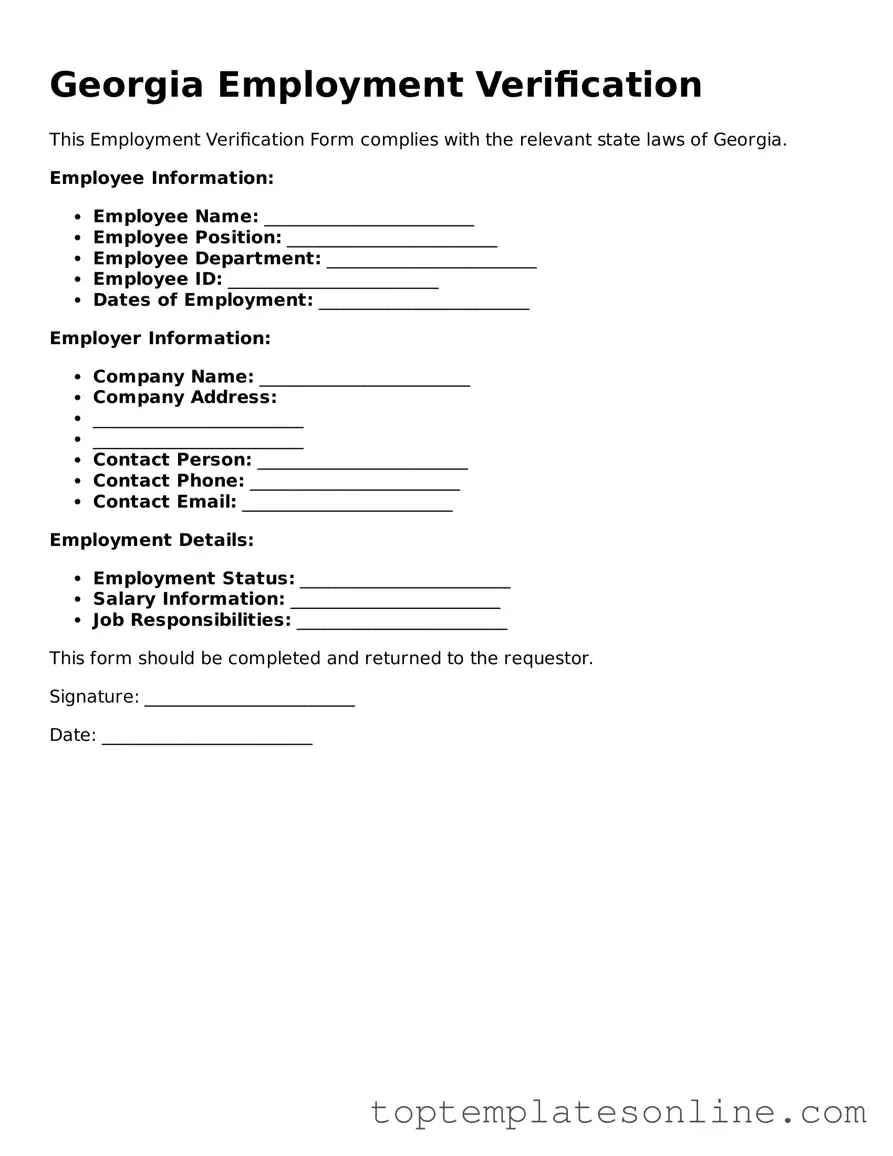Blank Employment Verification Template for Georgia State
The Georgia Employment Verification form is a document used to confirm an individual's employment status in the state of Georgia. This form plays a crucial role in various situations, such as applying for loans, housing, or government assistance. Understanding its purpose and how to complete it can simplify many administrative processes.
Customize Employment Verification Here
